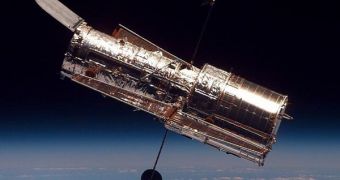This year will see the introduction of new space- and Earth-based observatories into use, taking advantage of new technologies and wavelengths that have never before been probed. Astronomers praise the International Year of Astronomy as potentially the most important in the field's 400 years of history. New Near-Earth Objects (NEO), asteroids, or comets are up for grabs, as well as new planets, pictures of our galaxy and of others, and new exoplanets.
“This year's going to be huge. The new capabilities are going to be absolutely fabulous,” Julianne Dalcanton, who is a scientist at the University of Washington in Seattle, says.
“In 2009, we would like everybody on Earth to think at least once about the wonders of the universe,” French astrophysicist Catherine Cesarsky, who is also the president of the International Astronomical Union, adds.
Ultraviolet, infrared, and radio wavelengths will be explored more thoroughly this year, astronomers announce, hoping that they will find objects or phenomena in deep space that are currently inaccessible through the use of the narrow wavelength on which visible light travels.
Some of the most important projects for this twelvemonth include the upgrading of the Hubble Space Telescope with two new optical sensors that will increase its visibility and allow it to remain competitive for another five years, as well as the completion of the Herschel Space Observatory, the largest European rival to the American telescopes.
The Kepler Telescope is also due to be completed, and its only mission will be to look for inhabitable planets in solar systems around distant stars. Working in approximately the same field of research, the Allen Telescope Array will feature 42 radio scopes, which will listen day and night for extra-terrestrial messages that might be on their way from another star.
Pan-STARRS is, moreover, bound to be finished this year, and will consist of four interconnected telescopes, whose main role will be to identify and calculate trajectories for fast-moving objects, such as asteroids, meteorites, or comets that may be on a collision course to our planet.
Buried under the Antarctic, the IceCube upside-down particle observatory will analyze the flow of neutrinos through the Earth, in an attempt to find out their properties and further analyze these particles' behavior. The ultimate prize for the team involved in IceCube would be to detect the place where the neutrinos originate in.

 14 DAY TRIAL //
14 DAY TRIAL //